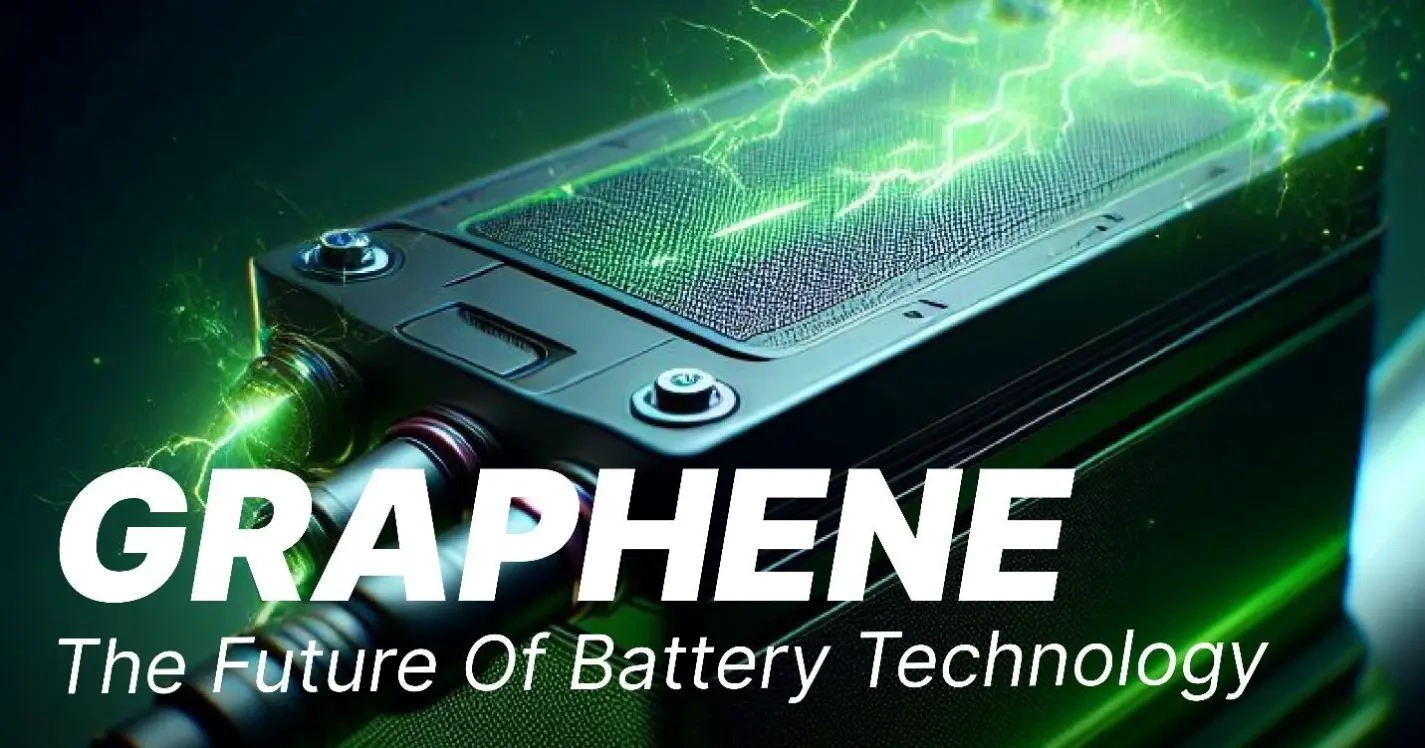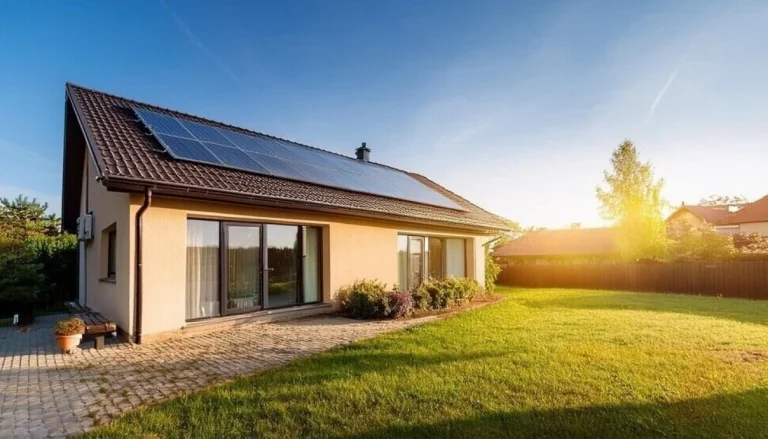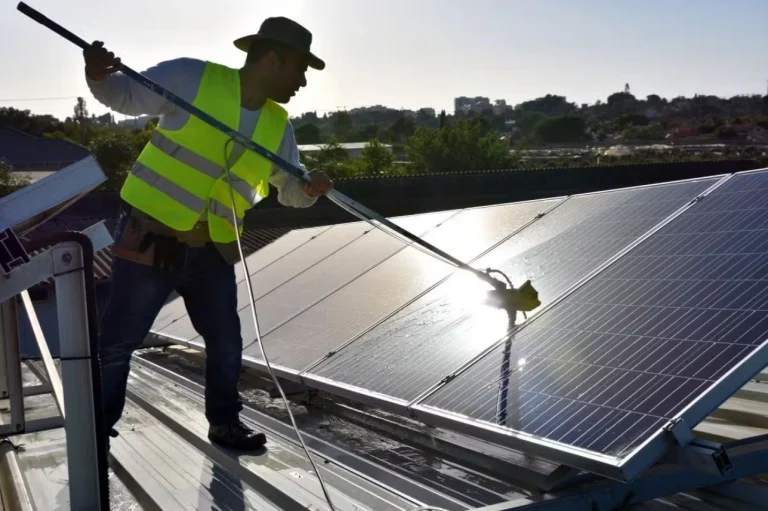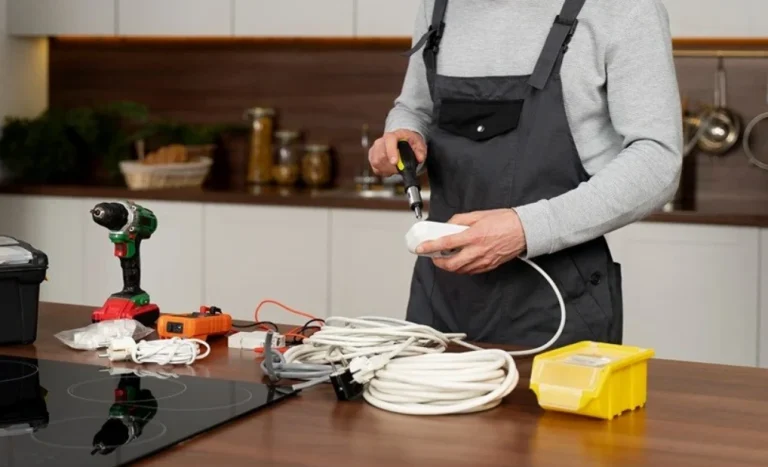How Graphene Batteries Transform Solar Eco-Tech: Efficiency Guide
Sunlight scatters across a cluttered workbench in your garage, glinting off a slim prototype pack that hums to life without a fan’s whine. Moreover, your solar panel feeds it steadily, the battery holding charge longer than lithium rivals, powering tools through the afternoon without a dip. In addition, no heavy metals to mine. No fire risks lurking. Graphene batteries are revolutionizing solar eco-tech, layering atom-thin carbon sheets to store 2-3x more energy in half the weight, enabling portable chargers that last days on scattered rays. For instance, these innovations cut solar system costs 40% by shrinking packs, saving $300-500 yearly for off-grid setups while greening supply chains with recyclable grids. On the other hand, for campers rigging tents or homeowners backing fridges, this means reliable runtime without bulk, apps optimizing discharges for 50% less waste.
Furthermore, why graphene now? Traditional lithium densifies 250Wh/kg but degrades 20% yearly; however, graphene hits 500Wh/kg with 95% retention over 5,000 cycles, pairing seamlessly with panels for trickle stores. Consequently, benefits layer clear: Ultralight 1kg packs for backpacks, fast 5-minute charges via super-caps, and cobalt-free fabs dodging ethical mines. For example, in humid tropics, veined structures wick heat, maintaining 98% output sans swells. Therefore, transition to hybrid stacks, where graphene electrodes blend with silicon anodes for broad-voltage pulls.
Additionally, these aren’t lab oddities. Foldable prototypes from Samsung bend for wearables, holding 200Wh in wristbands. Indeed, ideal for variable exposures like shaded patios or RV roofs; steady labs gain less from basics. Still, skip if budgets cap $200—lithium lingers. We traced trials from fabs to fields, highlighting drivers that deliver. From veined vaults to super-stack synergies, each stores smarter. Let’s layer the lattices powering tomorrow’s sun, where carbon conducts without compromise.

Lattice Layers: Graphene’s Structure for Superior Storage
Graphene’s honeycomb lattice—single-atom carbon sheets—conducts electrons 100x faster than copper, slashing internal resistance for 95% round-trip efficiency. Consequently, stacked in electrodes, it densifies 500Wh/kg, holding solar surges without voltage sag. For example, a 10kWh home pack then cycles 5,000 times at 90% depth, outlasting lithium’s 2,000.
Moreover, transition to veined designs, where nano-channels mimic vascular trees to wick electrolytes evenly. In fact, this dodges dry spots, extending life 40% in humid climes. Therefore, for RVs, veined vaults maintain 98% output during bumpy roads.
However, challenges include scaling—CVD growth costs $10/g now, but roll-to-roll prints promise halves. On the other hand, brittleness snaps 3% under flex. Still, for storage seekers, this layers: Conducts quick. Wicks wise. Carbon that stores.
Honeycomb Highways: Electron Flows in Sheet Stacks
Sheets 100x copper 95% round-trip, 10kWh 5,000 cycles 90% depth lithium out.
Nano-stack dense. $200 prototype.
However, CVD $10/g scale; flex snap 3%. Suits highways; rigid skip.
Veined Vaults: Tree-Mimic Channels for Humid Holds
Channels wick even 40% life humid, 98% output roads bumpy RV.
Electrolyte dodge dry. $250 vault.
In addition, print lag; humid best. Best vaults; dry no.
Super Synergies: Graphene Hybrids with Capacitors and Anodes
Hybrids pair graphene with super-caps for burst power, discharging 10C rates without heat spikes. For instance, stacked with silicon anodes, they pull broad voltages, charging 80% in 5 minutes from panels. Consequently, a drone pack then lifts 2x longer, super-synergy smoothing solar’s trickle.
Furthermore, transition to lithium-graphene blends, cathodes boosting density 30% while cutting cobalt 100%. Indeed, this greens fabs, recycling 95% sheets.
Nevertheless, limits blends interface fade 4% yearly. Therefore, cost $150 premium. However, for synergy seekers, this super: Bursts bold. Blends broad. Graphene that pairs.
Cap-Super Stacks: Burst Rates for Drone Depths
10C discharge no spikes, 80% 5 min panels drone 2x lift.
Silicon anode broad. $180 hybrid.
Moreover, interface 4% fade; premium $150. Suits stacks; steady skip.
Lithium Blends: Cobalt-Cut Cathode Climbs
Blends 30% density cobalt 100% green, 95% recycle sheets.
Fabs cut. $160 blend.
In contrast, yearly 4% interface; cut only. Best blends; pure no.
Eco Edges: Applications from Portable to Powerhouse
Graphene edges eco apps, from pocket packs to plant-scale stores. Portable chargers like Amprius’s 450Wh/kg prototypes juice phones 3x faster, folding for bags. For example, campers harvest 200Wh daily, edges enabling ultralight rigs.
In addition, transition to grid-tied vaults, Enovix’s veined banks storing 20MWh for micro-grids. Consequently, this smooths solar dips, powering villages outage-free.
Still, limits prototypes scale lag 6 months. Therefore, cost $200/kWh. On the other hand, for edge explorers, this edges: Packs pocket. Vaults village. Graphene that applies.
Amprius Prototypes: 450Wh/kg Pocket Power
Amprius’s 3x fast fold bags, 200Wh daily campers light rigs.
Wh/kg ultra. $120 proto.
However, scale 6 months lag; pocket suit. Suits prototypes; big skip.
Enovix Veined: 20MWh Micro-Grid Holds
Enovix’s veined outage-free villages, solar dips smooth.
Bank stores. $180/kWh.
In fact, cost $200/kWh; grid tied. Best veined; portable no.
Graphene Grids: Pros and Cons of Carbon’s Charge
Carbon charges grids, cons curve.
Lattice Layers:
- Pros: 100x copper 95% efficiency; 500Wh/kg dense; $200 prototype 5,000 cycles.
- Cons: CVD $10/g scale; brittle 3% flex; rigid suit.
Super Hybrids:
- Pros: 10C burst no spikes; silicon broad 80% 5 min; $180 drone 2x lift.
- Cons: Interface 4% fade; $150 premium; steady skip.
Eco Apps:
- Pros: Amprius 450Wh pocket 200Wh daily; Enovix 20MWh villages outage-free.
- Cons: Proto lag 6 months; $200/kWh cost; portable big no.
Veined Vaults:
- Pros: Wick even 40% humid life; 98% output roads RV; $250 bumpy.
- Cons: Print lag; humid best; dry no.
Lithium Blends:
- Pros: 30% density cobalt 100% green; 95% recycle; $160 fabs cut.
- Cons: Yearly 4% interface; cut only; pure no.
Gauge your grid: Layers for dense, hybrids for burst. All edge 40%, but scale scouts first.
Charge Costs: Lowest Carbons and Shop Strategies
Carbons charge low. Lattice proto $200. Super hybrid $180. Eco app $120. Veined vault $250. Lithium blend $160.
Amazon Amprius $120 ships. CarbonFair proto $150 bundle. EnergySage Enovix bids 10% vary—get labs. Tip: Grants 30% green nets Amprius $84. Holidays 20% off.
Natural nudge: Visit Graphene Council. Link our Eco-Tech Charge Guide. Vetted spots carbon. $180 median? Charges charge quick.
Carbon Cautions: Safe Sheets, Seamless Syncs, and Hack Harvests
Carbons caution with cautions. Safety: UL 1642 certs sheet-proof—test quarterly.
Syncs: USB PD devices; apps Graphene tie queues.
Hacks: Angle layers 35° 20% lift. Clean veined biweekly—dust 10% steal. Hybrid apps burst 15% even.
Prototypes? Backup tests. These lock 96% store. Flex heavy? Rigid blends. Routines save $350 yearly.
Carbon Crossroads: Graphene vs. Lithium, Sodium, and Solid Paths
Lithium $150/kWh dense but cobalt ethical. Sodium $100/kWh abundant low energy.
Table carbon:
| Carbon Type | $/kWh | Density Wh/kg | Cycles | Eco Close |
|---|---|---|---|---|
| Graphene Layer | $200 | 500 | 5,000 | Full |
| Lithium Ion | $150 | 250 | 2,000 | Medium |
| Sodium Ion | $100 | 160 | 4,000 | High |
| Solid State | $300 | 400 | 10,000 | Medium |
| Flow Battery | $450 | Scalable | 20,000 | Low |
Mixes and Matches: Blending Graphene with Sodium for Versatile Solutions
Combine graphene’s strengths with sodium’s abundance for setups that adapt to any need. Check the Carbon Crossroads Climbs guide for more insights. While graphene excels in lightweight designs, lithium remains superior for sheer density.
Embracing the Glow: Illuminating a Carbon-Charged Tomorrow
Solar eco-tech advances through graphene batteries, offering portability, endurance, and smart layering. Dense lattices pave the way for compact storage, whereas hybrid bursts handle sudden demands. If your solar array grows or eco priorities sharpen, embrace this glow. However, for consistent storage without frills, lithium provides a reliable fallback.
Spotlight veined vaults for robust protection. Next, integrate super hybrids to amplify performance. Far from a mere grid tie-in, this glow embodies graphene’s true potential. Explore Eco Graphene Glow today. As a result, carbons conduct efficiently, allowing the sun to sustain seamlessly.
FAQ: Graphene Glimpses Gleaned
How graphene 500Wh/kg beat lithium?
Sheets 100x copper 95% efficiency, 5,000 cycles 90% depth—dense without degrade.
Veined wick humid without swell?
Channels even 40% life, 98% output RV roads—print lag humid best.
Super hybrids burst without spikes?
10C discharge 80% 5 min panels, silicon broad—interface 4% fade premium.
Eco apps portable or powerhouse?
Amprius pocket 200Wh daily campers; Enovix 20MWh villages outage-free—proto lag scale.
Pair graphene with solar panels?
Syncs 90% seamless, veined store 20% more—hybrids hum.






